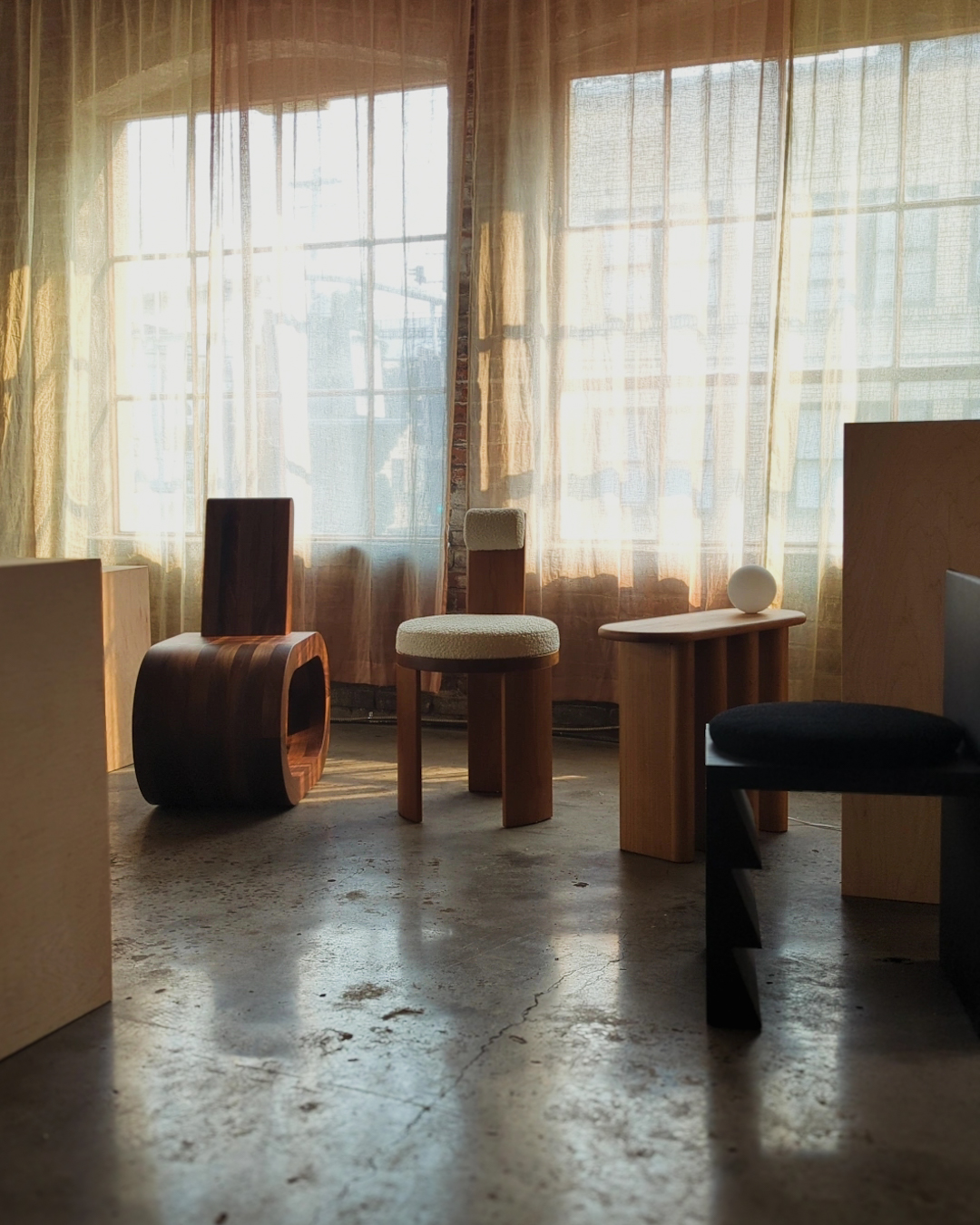We caught up with the brilliant and insightful James Mitchell a few weeks ago and have shared our conversation below.
James, thanks for joining us, excited to have you contributing your stories and insights. Have you been able to earn a full-time living from your creative work? If so, can you walk us through your journey and how you made it happen? Was it like that from day one? If not, what were some of the major steps and milestones and do you think you could have sped up the process somehow knowing what you know now?
Fortunately I’ve been able to pay the bills through my creative work. Originally I split time as a musician and illustrator / graphic designer in my twenties. Eventually I ended up building furniture and fabricating objects for other designers as well. I’ve been doing this full time now for about ten years and the last three of those years have been solely dedicated to getting Studio Big Moon off the ground, which is my furniture and fabrication studio. I felt a lot of the usual obstacles that other artists and craftspeople feel at first like finding my niche and establishing the right price points. It was really tough figuring out how to properly price projects and how to manage my finances. I sort of hit the ground running and spent about two years working 70 hours weeks and losing money. It wasn’t until my third year that I made a profit and really felt confident in my business. The hardest lesson for me was learning how to charge more for projects and trusting that the quality of my work would keep people coming back rather than scaring them off, which it has. I don’t think there’s any way I could have learned that lesson without breaking my back for years and finally deciding that my work deserved more compensation. I’m a people-pleaser at heart so it took some major adjustments on my part.

James, before we move on to more of these sorts of questions, can you take some time to bring our readers up to speed on you and what you do?
I transitioned into furniture-making, retail build-outs, and fabrication after some years of graphic design and illustration work. At its core, any type of design work is problem-solving. There are certain sets of parameters that you’re working with and you’re using your creativity as best as possible to work within those parameters. All of my personal work stems from pretty simple two-dimensional shapes that I try to adhere to while extracting those ideas into three dimensions. The majority of my fabrication and built-out projects involve certain shapes, colors, and textures that we’re trying to achieve and engineering everything to reach that desired aesthetic. They often involve a lot of planning and drafting to get everything just right. What I strive to do, and what I think I’ve done a good job of maintaining, is providing a place for designers and customers to bring rough ideas to and turning those ideas into a reality. Its notoriously difficult to find the right person to reliably design, draft, build, finish, and install pieces. The fact that most of my business is returning customers with strong relationships tells me that I’ve provided that resource.

We often hear about learning lessons – but just as important is unlearning lessons. Have you ever had to unlearn a lesson?
One of the hardest lessons I’ve learned as a creative is that the best ideas tend to be the most simple and intuitive. In other words, the details matter to some degree, but not merely as much as the general feeling that you get when you interact with a piece. I can’t tell you how many years I spent honing in the details of a project over late nights, only to come back to them the next day and realize that I’d overlooked something important about the overall aesthetic of it. I studied the people around me and it was obvious that the most successful people simply have a gut instinct for something and manifest that thing while rolling with the punches. For that very reason, I always try to stick with my gut and focus on the ideas that come to me naturally. Most of my best ideas come to me when I’m walking or I’m about to fall asleep, which is a common theme in art. The process of building something is really just about staying in touch with that original feeling while discovering things about the medium that you’re working with.

How can we best help foster a strong, supportive environment for artists and creatives?
I think its easy to forget that meaningful objects take a lot of resources to create. The piece of art that you’re buying or the custom table that you’re having built inherently rely on people having adequate resources to create those things and to endow them with emotion or something of value. In other words, meaningful work is rarely cheap, and cheap work is rarely meaningful. We’re so accustomed to buying the cheap Ikea table or the cheap Amazon product that we’re reluctant to spend money on hand-made things. I don’t expect anyone to have the resources to buy work that is costly, but I do think its important to remember that a little bit of money spent on supporting creative work can be really meaningful for both the consumer and the maker.
Contact Info:
- Website: https://studiobigmoon.com
- Instagram: @b_i_g_m_o_o_n





